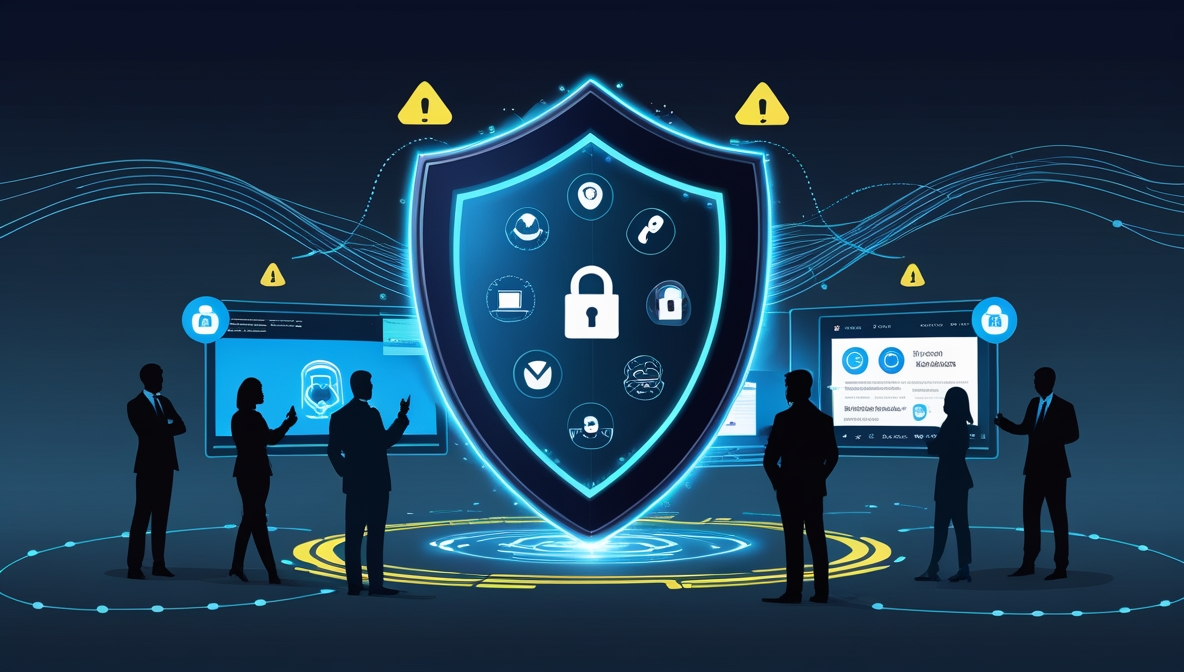Cyber threats aren’t just a concern for global corporations—they're a daily, growing risk for small and mid-sized organizations that often lack the deep defenses of their larger counterparts. One resource, a concise cybersecurity awareness overview, offers a practical entry point for CIOs looking to strengthen their organization's frontline: its people.
Small businesses make up 95% of enterprises in the U.S., generating half of the country’s GNP and new jobs. Yet these same businesses often lack the infrastructure, processes, or staff to mount a sophisticated cybersecurity defense. Unlike enterprises with dedicated security operations, smaller organizations operate with leaner teams and looser controls—making them low-hanging fruit for cybercriminals. As this overview shows, attackers only need one vulnerability to succeed, while defenders must secure every potential weakness.
When employees aren’t trained to recognize phishing attempts, weak passwords, or suspicious activity, the entire organization becomes exposed. According to data presented, viruses affected 49% of surveyed businesses, insider network abuse 44%, and theft of mobile devices 42%. The average financial impact of security incidents—especially those involving financial fraud—can exceed $500,000. Notably, notifying customers after a data breach costs over $130 per person. Multiply that by just 1,000 clients, and you’re looking at a $130,000 hit before remediation even begins.
That’s not just inconvenient—it’s unsustainable. Add to that reputational damage, legal exposure under data protection laws like HIPAA and Wisconsin 134.98, and the difficulty of recovering from customer trust erosion, and it’s clear: reactive approaches are no longer enough. Threats like phishing and social engineering aren't just technical problems; they’re psychological attacks, relying on people to make poor decisions. And too often, they do. Simple missteps—clicking a link, using “123456” as a password, ignoring software updates—open doors that firewalls and antivirus software can't always close in time.
The cybersecurity awareness overview offers an essential training baseline. It explains real-world risks in plain language: from worms and logic bombs to password cracking and phishing schemes. It doesn’t just name threats—it contextualizes them, offering specific examples, symptoms of compromise, and prevention techniques. It introduces the concept of defense in depth, and outlines what makes a strong password, the importance of software patching, and how to recognize social engineering in action. This makes it especially effective as a tool for CIOs who need to educate non-technical employees and launch security initiatives without overwhelming them.
Cybersecurity is no longer optional or limited to technical teams. This overview empowers CIOs to lead security from the top down by engaging the most vulnerable—and valuable—link in the security chain: people. It’s an ideal starting point for any organization serious about reducing its exposure to preventable, high-cost breaches.
Main Contents
- Common cybersecurity threats including viruses, worms, Trojan horses, logic bombs, phishing, and social engineering
- Human vulnerabilities and the high cost of breaches caused by weak passwords, insider threats, and lack of awareness
- Practical prevention strategies such as strong password practices, antivirus tools, system patching, and firewalls
- Explanation of network-based attacks like man-in-the-middle, war driving, and rootkits
- Legal and compliance implications of data breaches, including state laws and HIPAA requirements
Key Takeaways
- Human error remains a top cybersecurity risk, especially in small and mid-sized organizations
- A single data breach can cost over $130,000 just to notify customers, not including legal or reputational fallout
- Basic defenses—strong passwords, regular updates, and antivirus software—are critical but often neglected
- Social engineering is one of the easiest and most effective attack vectors for cybercriminals
- Security awareness training is essential to build a culture of vigilance and reduce avoidable risks
CIOs and IT leaders often grapple with the challenge of securing their organizations against threats that don’t come from firewalls or intrusion detection logs, but from unsuspecting users clicking the wrong link or setting a weak password. The cybersecurity awareness overview offers a practical, accessible way to bridge the knowledge gap between technical safeguards and everyday behavior—transforming a soft target into a stronger line of defense.
- Launch a Company-Wide Security Awareness Program
Use the content to kickstart internal training that addresses real threats like phishing, malware, and password security in a format non-technical users can grasp. - Communicate the Business Impact of Security Lapses
Leverage facts and figures (e.g., $130/customer breach notification cost) to align executives and stakeholders around the financial risks of neglecting user-focused security. - Assess Organizational Weak Points
Use the checklist-style topics—social engineering, outdated software, unsecured networks—to conduct informal audits or discussions that surface hidden vulnerabilities. - Support Regulatory Compliance
Apply the sections on HIPAA and state-level breach laws to reinforce policy development and ensure your organization is meeting basic legal requirements. - Enhance Third-Party or Vendor Security Standards
Share the overview with partners or vendors as a minimum bar for cybersecurity hygiene, particularly when working with smaller firms or remote teams.
By incorporating this cybersecurity awareness overview into strategic initiatives, CIOs and IT leaders can address one of their most pressing real-world problems: how to reduce risk at the human level. It’s a low-cost, high-impact tool that elevates security literacy across the organization—starting with the basics, but driving toward meaningful cultural change.


